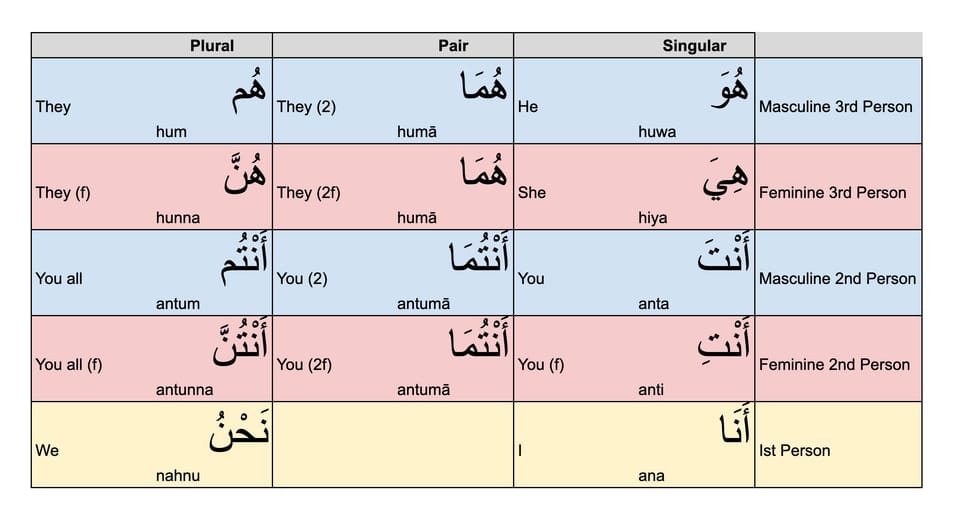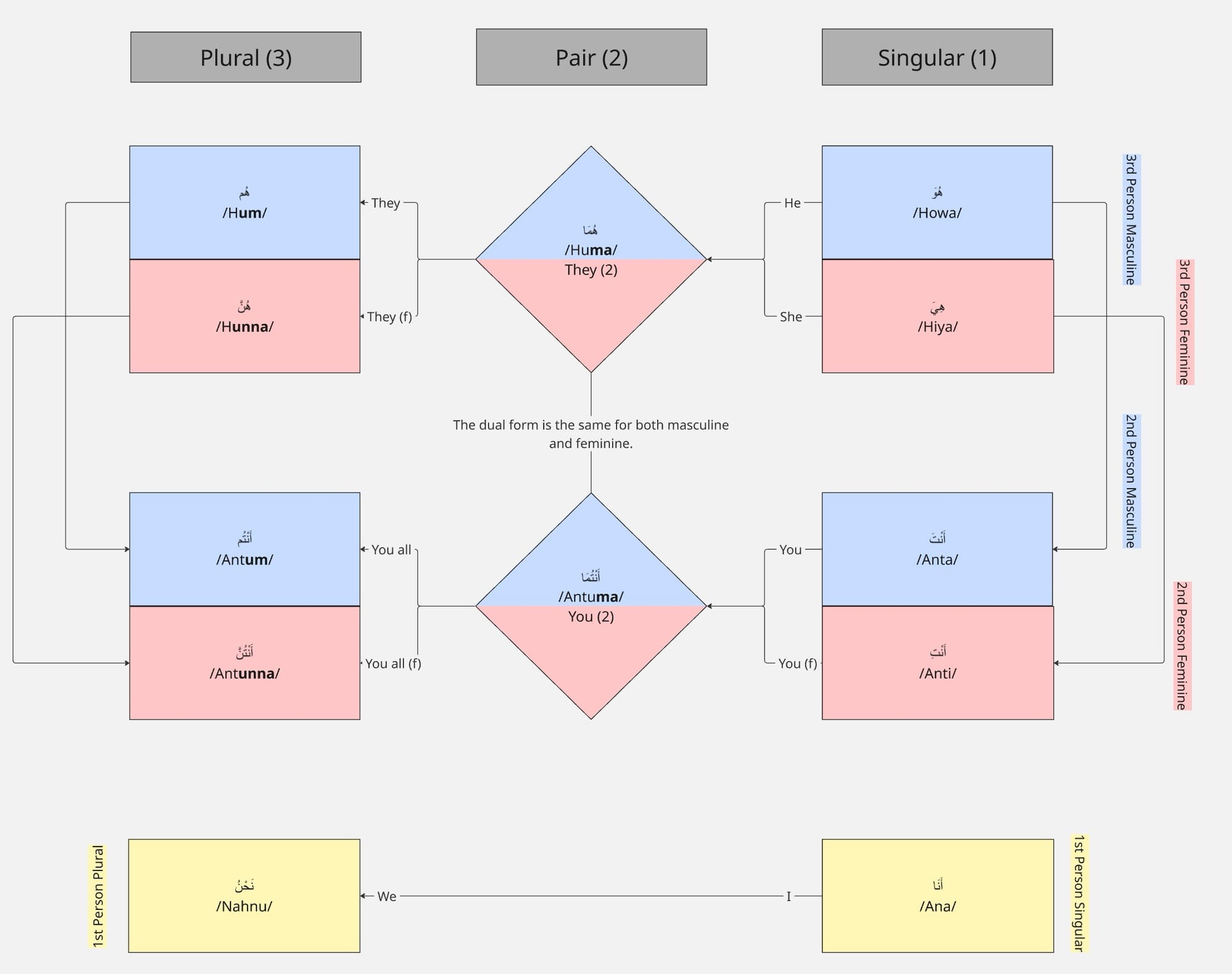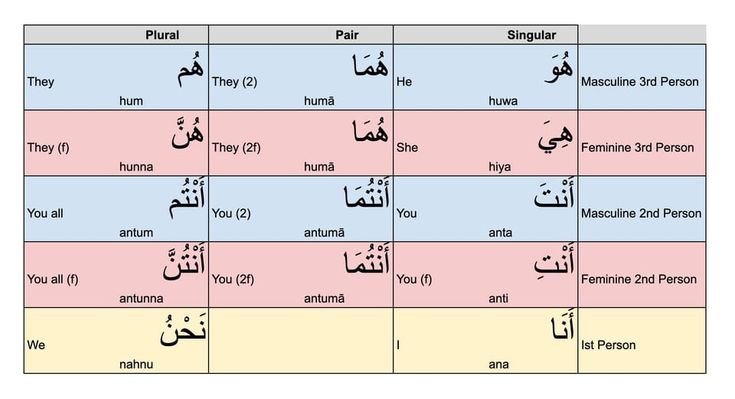Quick Guide to Arabic Pronouns (ضمائر)

Arabic pronouns are a foundational part of learning the language.
They help you express who is doing the action in a sentence - whether it’s I, you, he, she, or they.
Arabic separates pronouns by gender (masculine/feminine) and number (singular, dual, plural), which gives it more precision than English.

Here’s a quick chart to get familiar:
The dual form is especially unique in Arabic and used specifically when referring to two people — something English doesn't have.
Memorizing and mastering these pronouns will make it much easier to understand Arabic verbs, sentence structure, and everyday conversations.
Stay consistent, and Happy learning!
Title: NAM Dream Worldwide Arabic Intensive Course – Workbook
Source: Bayyinah Institute
Direct Link: https://bayyinahhandouts.s3.amazonaws.com/dww_2020/NAHW_%2010-day%20WB%20Final.pdf
This PDF is part of Bayyinah’s 10-Day Arabic Grammar Workbook, which provides a structured and simplified introduction to Arabic grammar. The pronoun chart in that document is especially helpful for beginners.
#arabic
Pin on Learn Arabic
This Pin was discovered by The Guiding Way. Discover (and save!) your own Pins on Pinterest.

